Entrance, slippin
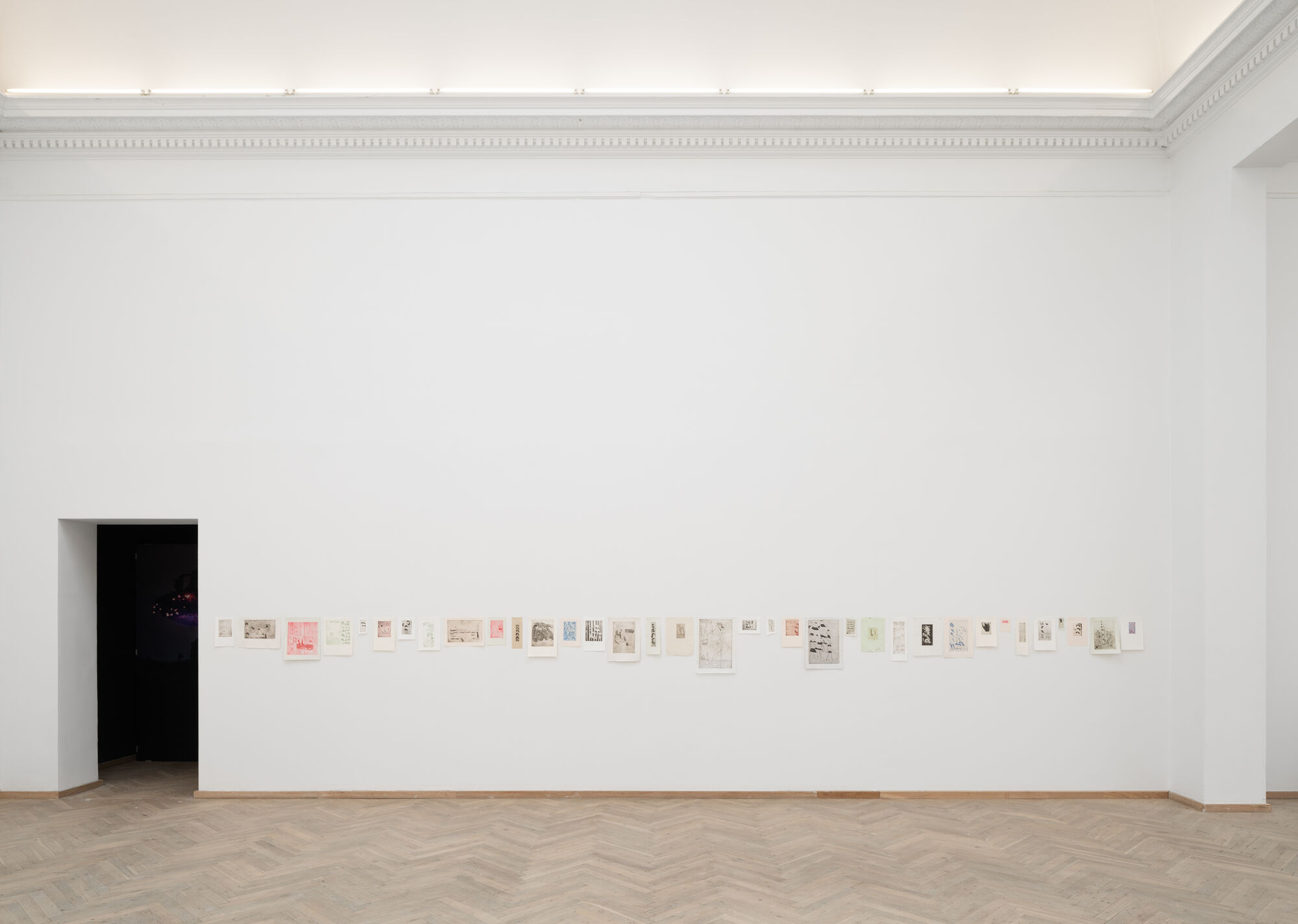
Stahn’s presentation for AFGANG has two components: a series of works on paper, and a book. The paper works are copper prints on thin plant, rice, and silk papers, mostly in pale colors but a few in black. Emphasizing their delicacy, the works have no frames—they appear lightweight, and stand on their own. They are about women, everyday life, and material things. They are also about assemblies, gatherings, and solitude. The second part of the work is a book entitled Prism, which features three essays. A prism is the form that divides and separates sound, colors, things, and subjects. The essays in Prism cover topics like economics, building a practice like a house, loneliness, handwriting, drawing, criticism, and the use of naivety and flatness as an anti-power strategy or as an evasion.
The artist also works as a publisher, and is dedicated to paper, graphics, and text. She is concerned with the tactility of things, not only art objects, but the material of daily experience. Stahn writes: I fill my drawings and my writings with all these common things because everyday life takes the air out of me and its full of these things; full of socks and shirts and slender glasses and knifes and Venus nipple cream cakes and pillows as scripts and a bird pitcher and hills of textiles, organized and unfinished work that reads on tables like hung squid and a bed with foam that remembers lovers and paper and plastic pearls and pots full of tea made out of herbs that twirl up in the hot hot water then sink, drip into a lip to reduce anxiety. In this work, a deliberate fragility works against notions of permanence and stability. Instead, Stahn draws inspiration from the fleeting, the observed, and the felt.
- Helga Just Christoffersen, curator of Afgang 2020
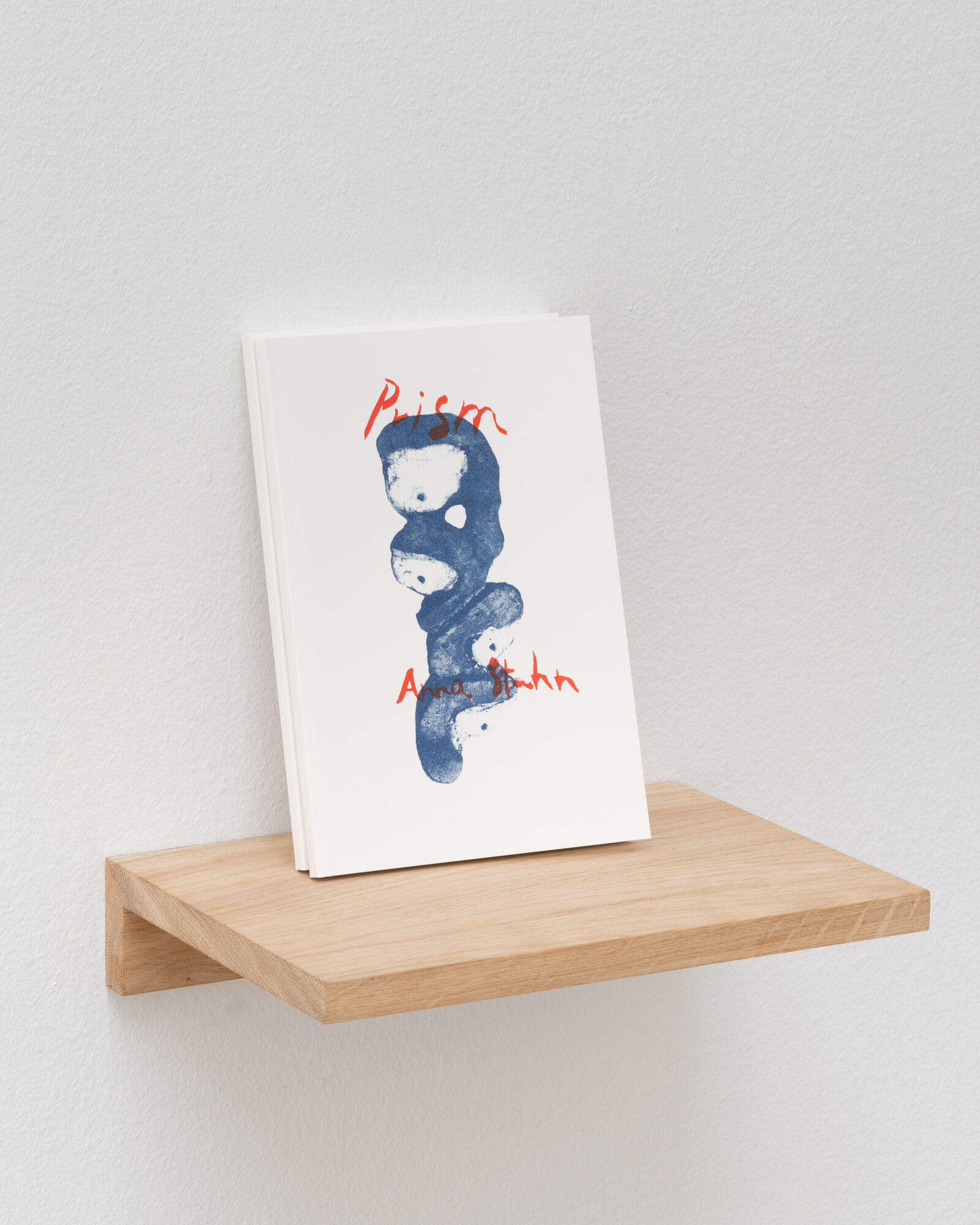
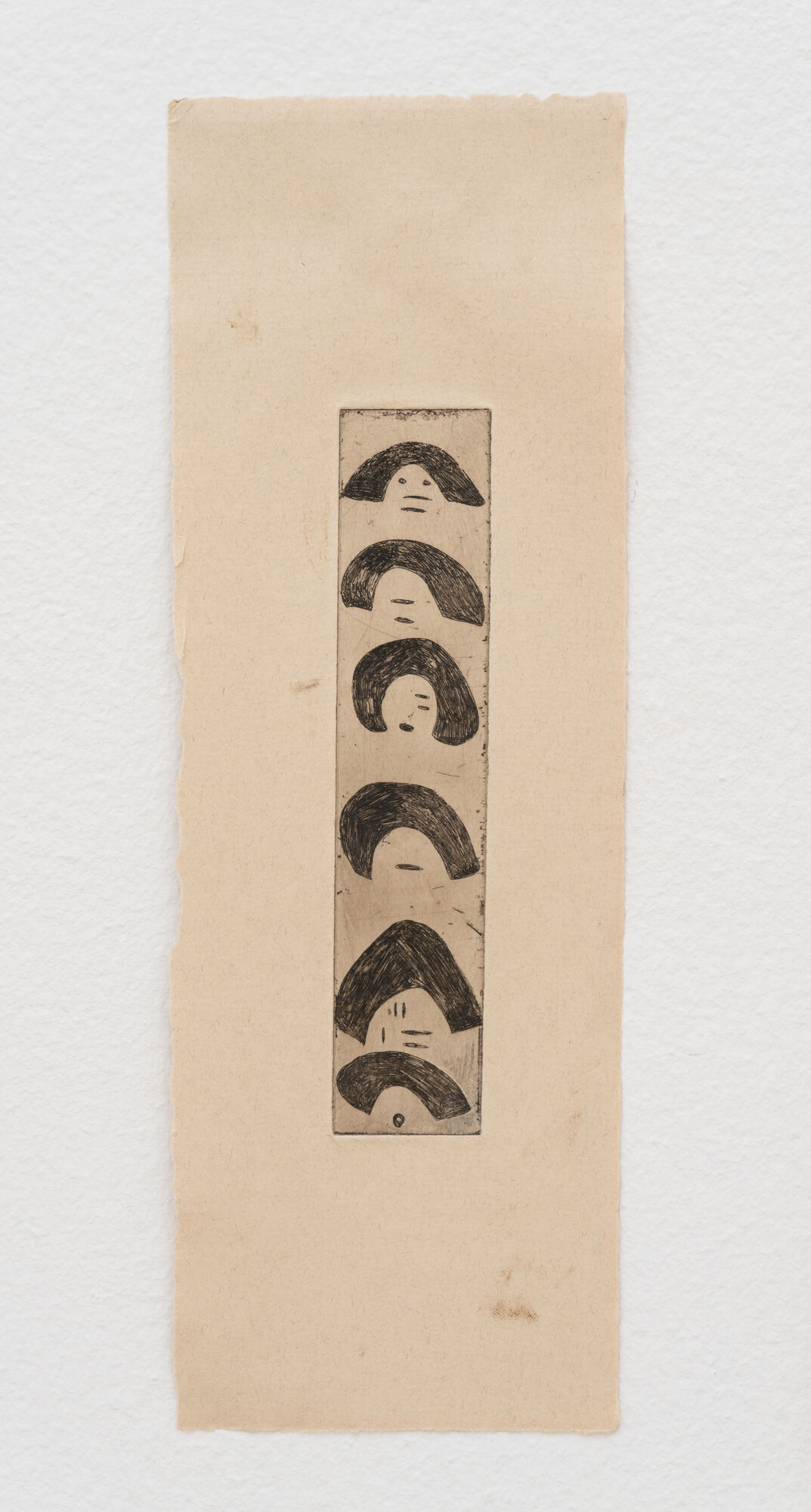
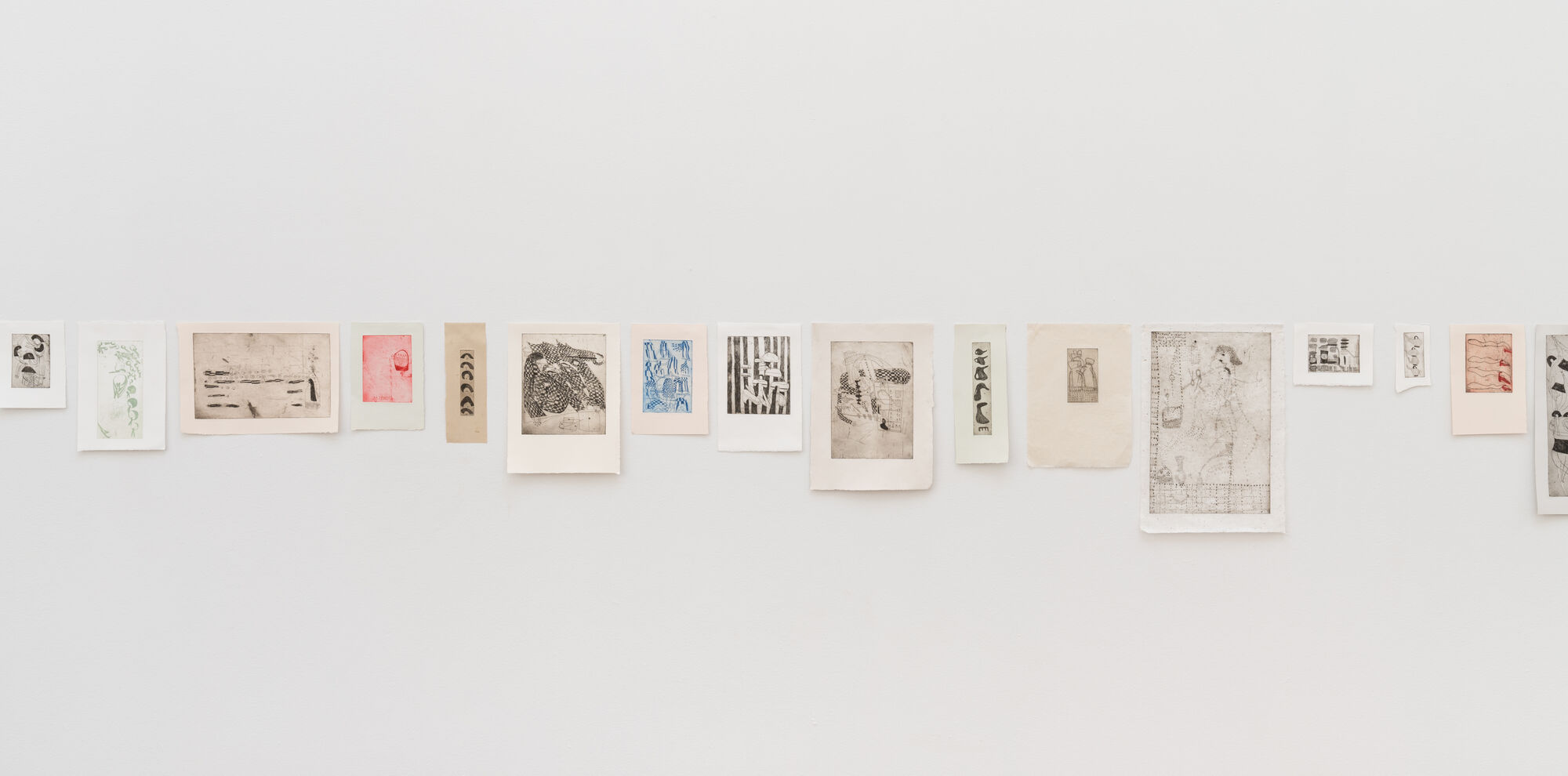
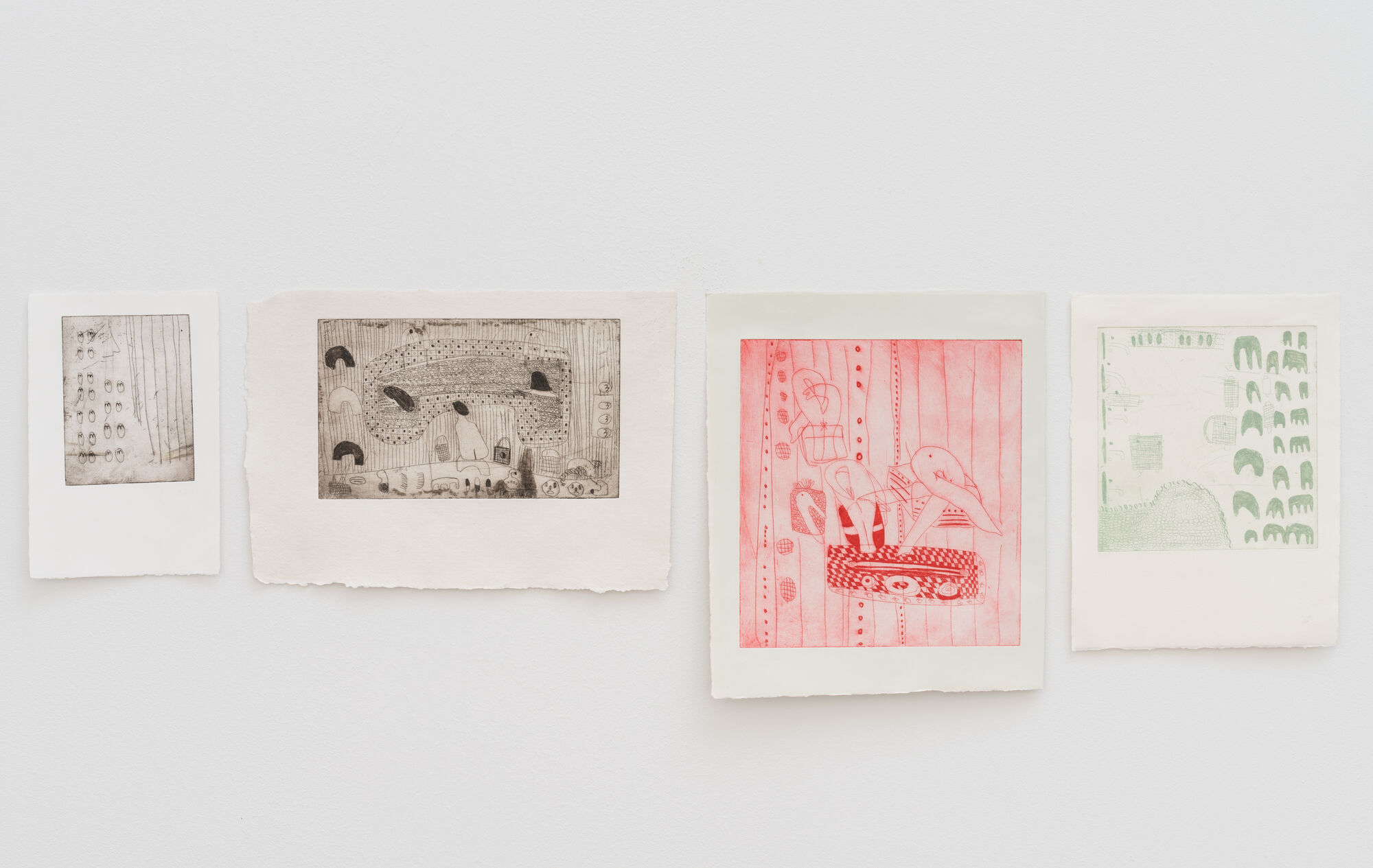
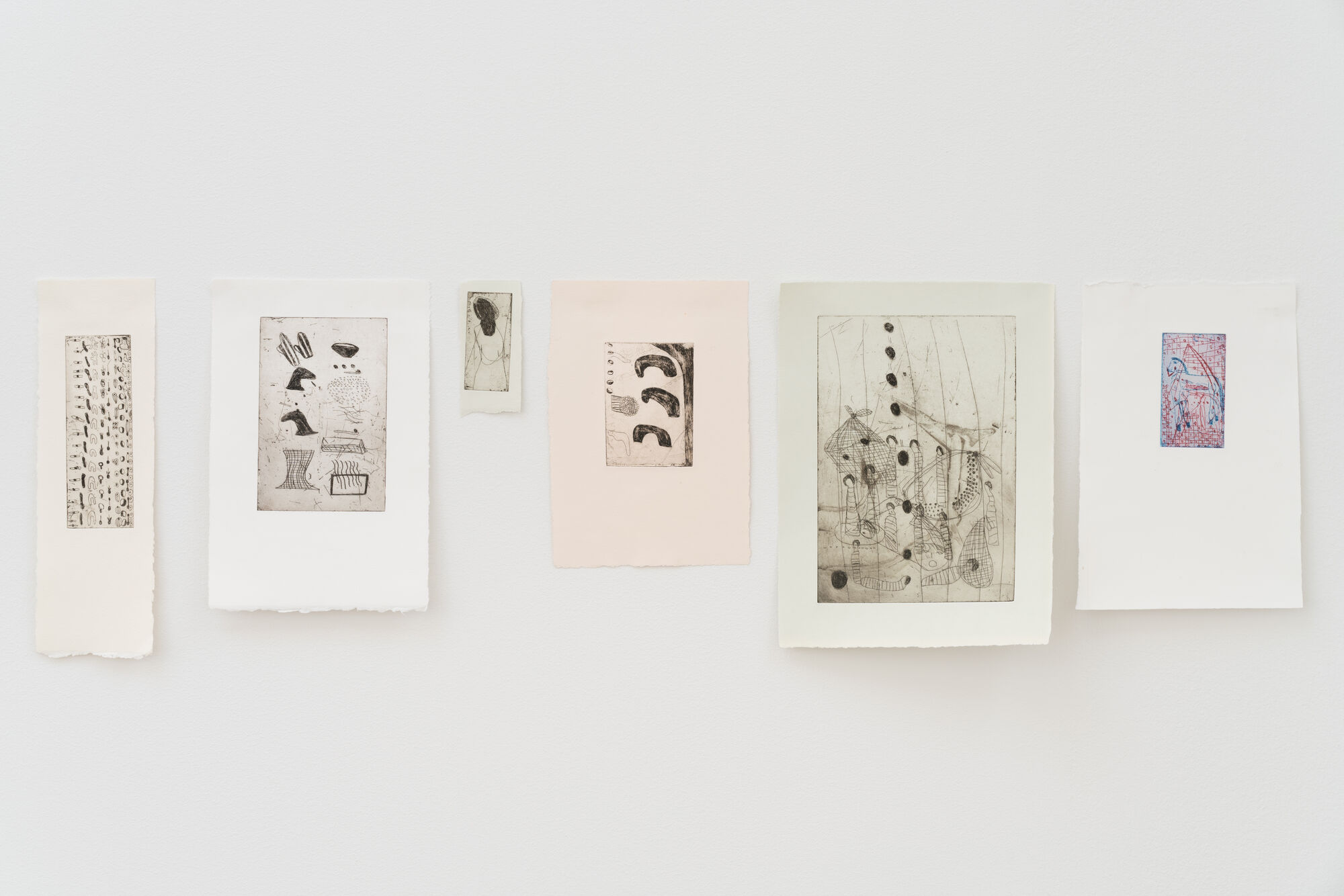
Photos by David Stjernholm